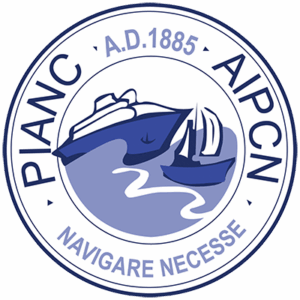New PIANC Working Group MarCom WG269 Design Guidelines for Offshore Wind Ports– call out for members.
About:
The transition to renewable energy and the goal of energy independence highlights wind energy as a reliable and sustainable source of power. Offshore Wind (OW) plays a crucial role in achieving renewable energy targets. However, the deployment of large-scale OW projects—measured in gigawatts (GW)—requires ports to be upgraded or new ones to be developed. Currently, there is not enough port capacity to handle the expected increase in demand, which is a major challenge for the industry.
Different Impacts of Wind Energy on Ports
Onshore and offshore wind energy have different impacts on ports. For onshore wind, ports are used to move large components like turbine blades, towers, and nacelles from factories to locations near the wind farms. These components are oversized and require special equipment and logistics.
Offshore wind places greater demands on ports, and these demands depend on the type of technology used. Bottom-fixed (BF) offshore wind is commonly installed in shallow waters up to approximately 60m, like the North Sea, using structures such as monopiles, jackets, and Gravity-Based Structures (GBS). Ports serving BF projects serve primarily as marshalling hubs, where components are pre-assembled before being transported to installation sites.
Floating offshore wind is an emerging technology that allows wind farms to be installed in deeper waters, where most wind resources are located. This technology requires ports to handle larger components, such as floating platforms, and to provide more space for assembly and storage. Floating OW places even greater demands on port infrastructure compared to BF projects.
Objectives of WG269
Objectives
The objective of this working group is to provide guidelines to determine the specific demands that wind energy projects place on ports, with a focus on the progression from onshore to offshore wind. By reviewing the impact of these projects on port operations and infrastructure, the group aims to:
A. Analyse Industry Singularities: Identify and explain the unique requirements that offshore wind projects impose on ports.
B. Provide Insights and Recommendations: Offer practical insights and recommendations to guide future port developments, considering the entire lifecycle of offshore wind projects and the types of terminals needed, such as marshalling ports, assembly/manufacturing ports, WTG integration ports, O&M bases, and logistics hubs.
C. Facilitate Knowledge Sharing for Emerging Technologies: As floating offshore wind is still in its early stages, with limited data and mostly pilot or pre-commercial projects, the group will discuss how the sector is preparing for deployment and share general findings on the planning of future activities and terminal requirements.
D. Document and Share Real Experiences: Present real-world cases and gather data from current projects to draw general conclusions about the implications for ports.
By addressing these points, the working group aims to contribute to the understanding and development of port infrastructure that supports the growing wind energy sector, providing guidance to owners and designers of all types of bottom-fixed and floating offshore wind ports worldwide.
For more information please download the WG269 Terms of Reference
Interested in being part of this International Working Group?
If you would like to represent the Australian & New Zealand National Section of PIANC on this Working Group, please apply to the AU-NZ Board. Many of our members are currently active on a number of PIANC Working Groups and they produce significant outcomes that benefit maritime matters in our region. They also bring significant benefits to participants who get to meet, learn from and share with global experts.
Please advise if you qualify as a Young Professional (YP – 40 years or younger) as there are two positions available in each Working Group, one of which is for a YP.
How to Apply
Please forward your application before COB Friday 9 May 2025
Send your application to all below:
Greg Britton, (Technical Commission Lead AU-NZ) E: greg.britton@rhdhv.com,
Scott Keane (MarCom Commission Lead AU-NZ) E: scott.keane@stantec.com
Paul Weston, Executive Officer AU-NZ) E: Paul.weston@pianc.org.au
Process for Applications
Your application should include a detailed CV/Resume with a short covering letter outlining:
1. Your experience in the particular technical field;
2. Why the WG is relevant for the Australian / NZ content and the direct benefits of participation;
3. A commitment that you will prepare (for distribution to all members) a short report providing an overview & outcomes of the WG etc;
4. Whether or not you are seeking to access Travel Assistance Policy (TAP )funding; and
5. Whether you qualify as a Young Professional.
Eligibility:
Please note that Working Group Members need to be Individual Members of PIANC, working for a Corporate Member or Platinum Partner, be an invited expert or a be a member of a Sister Organisation.
Process:
A Selection Committee will review all nominations received and make a final recommendation to the PIANC AU-NZ Chair.
Responsibilities:
Please be aware that membership of a Working Group requires your active participation. This includes attending typically four Working Group meetings per year – most held virtually but typically at least one in-person meeting once a year at an international location (generally Europe). You may apply to be a ‘Corresponding Member’ if you do not want to undertake the normal travel requirements of full membership. If you are expert in the field, however, and would like to influence the outcome of the Working Group we encourage you to participate as fully as you are able.
Costs:
All costs associated with membership must be borne by either yourself or your employer, however PIANC Australia & New Zealand has a Travel Assistance Policy to partially assist with travel & attendance at Working Group meetings, in order to promote Australian and New Zealand technical input into these important WG activities.
Under the PIANC AU-NZ Travel Assistance Policy (TAP), annual available funding per WG member is $3,000, subject to application and approval. TAP funds may be payable post travel upon the successful completion of a WG Summary Report and production of relevant travel receipts.

